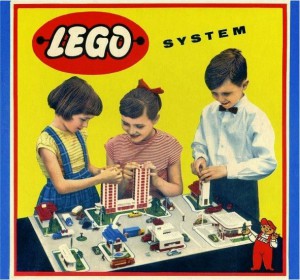So I was watching this documentary the other day, set in Norway, about whether or not gender dimorphism among humans is real.
Of course it’s real, but that’s not the point.
The documentary happened to interview a number of Norwegian women about why they chose to work in stereotypically “female” professions (the “paradox” here is that in one of the most “gender egalitarian” countries in the world, women are choosing to go disproportionately into stereotypically female professions instead of into STEM.) Then they interviewed female students somewhere in Africa, IIRC, who professed a desire to go into STEM and related fields.
African countries are not generally thought of as bastions of female equality and empowerment, though perhaps they should be.
Anyway, the Norwegian women wanted to go into feminine careers because they found those careers more “interesting”–they just wanted to do things that involved people, say, instead of boring old numbers. The African students, by contrast, wanted to go into technical or medical fields because they perceived these as high-pay and useful.
To make a Mazlow’s hierarchy of professions, we might say that doctors and civil engineers are necessities for a functioning society, while doing things you find fun and interesting is a luxury.
Back in the day–that is, back more or less in my childhood and nearby years–the gender split in the children’s aisles wasn’t so extreme. We didn’t have purple “girl Legos” and black “boy Legos;” they were just Legos:

The clothes have changed, too–these days, it is perfectly normal to send a girl to school wearing layers of sparkly fluff that would previously have been reserved for ballet recitals or Halloween. In my day, we just wore pants.
(There’s an obvious irony here, that the people who proclaim the loudest that male and female children [and adults] are neurologically the same and have the same preferences in jobs, toys, hobbies, etc., tend not to be the people who actually have children and have the most first-hand experience with their preferences.)
I was speaking with a friend recently, the youngest of five from a large extended family. They mentioned that as a kid, they always wore hand-me-downs; they received their first new piece of clothing (underwear excluded) at the age of ten. Which made me speculate that for poor people with several kids to clothe, clothing that could be worn by either gender might be seen as more useful than clothing that was obviously “for girls” or “for boys;” the same is true of toys, which are more useful if all of the kids are interested in them than if only one kid is interested in them. By contrast, rich people or people with only one kid may just get a specific item aimed at that kid.
Thus wealthier countries, despite their claims of egalitarianism, may use their wealth to indulge in more gendered behavior, goods, hobbies, jobs, etc., while less wealthy countries may focus their resources on high-utility, multi-use behaviors, goods, hobbies, jobs, etc.
Now, yes, I know that traditional societies did/do not dress their children in identical clothes; if you have 8 children, it is quite easy to have a set of dresses for four of them and a set of pants for the other four. But this is not necessarily any more gendered than our current clothing, and still leaves aside toys, jobs, etc.
Obviously I am just speculating; I’d be interested if anyone knows of any relevant data.
[…] Source: Evolutionist X […]
LikeLike
>”Now, yes, I know that traditional societies did/do not dress their children in identical clothes; ”
Actually they did:
http://histclo.com/style/skirted/Dress/dress-era.html
LikeLike
Thanks for the link.
Only for infancy/very young children, I will note.
LikeLike
[…] X wonders whether gender dimorphism is a luxury good. To some extent it certainly is. I think the ability to pretend gendered do not arise principally […]
LikeLike